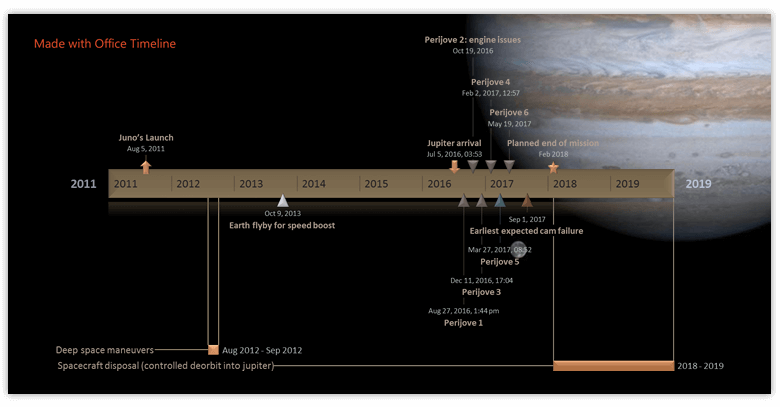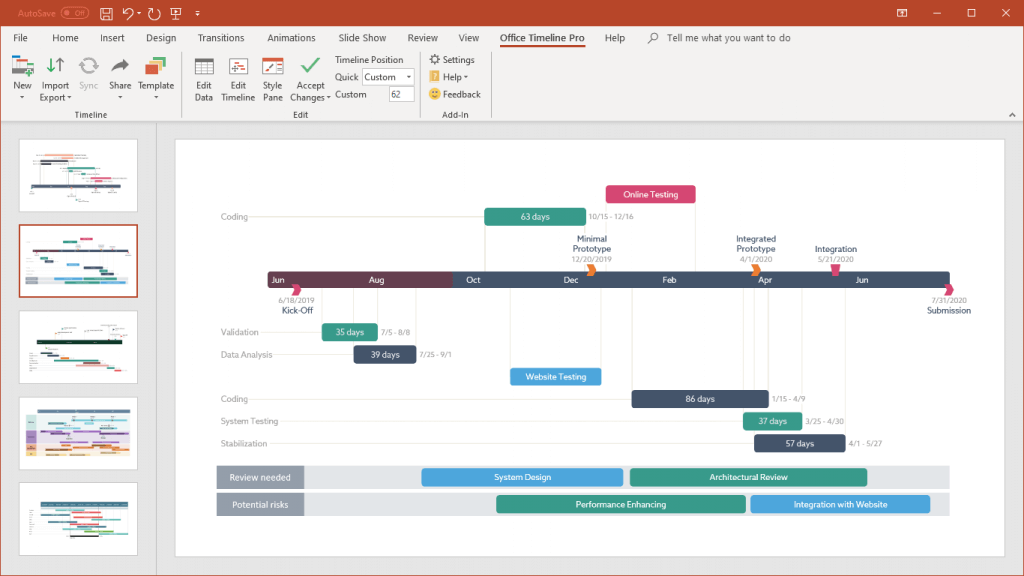In August 2011, NASA launched an orbiter named Juno that would travel 1.7 billion miles to Jupiter to take measurements, snap photos and search for clues of how the largest planet in our solar system was formed. The spacecraft successfully reached Jupiter’s orbit on July 5, 2016, and has since wowed the world multiple times with the data and images sent back. Following the orbiter’s latest close flyby at the end of March, 2017, NASA has released another set of stunning photos that stirred up great interest worldwide. To celebrate Juno’s achievements, let’s have a look at its journey through space up until now and see what its future plans are as well.

The Juno Space Probe Timeline illustrates the orbiter’s expedition to Jupiter, from the moment it was launched to its presumed disposal time. The image displays some of the most important milestones in Juno’s voyage, including the moment it entered Jupiter’s orbit, its 6 perijoves (the points in orbit where Juno is closest to Jupiter), its earliest expected camera failure, and its planned end of mission. The expedition was scheduled to end in February 2018, when Juno would intentionally be deorbited into Jupiter’s atmosphere and disintegrated to eliminate space debris and contamination risks. However, after engine problems that caused the spacecraft to orbit Jupiter at a slower rate, it is believed that the mission could continue through 2019.
The Juno Space Probe Timeline was created in PowerPoint using the Office Timeline plug-in and can be copied and distributed for private or public use. The free edition of the software can be used to make quick edits to the visual, while the Plus version features more advanced timeline creation and customization options – ideal for legal, business or academic presentations.
To customize or update the graphics, download the Juno Space Probe Timeline PowerPoint version here.

Turn project data into professional timelines
Get the advanced features of Office Timeline Pro+ free for 14 days.
Get free trial